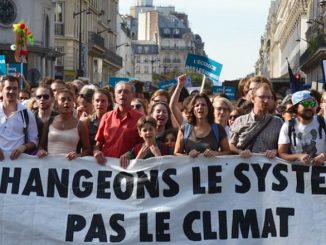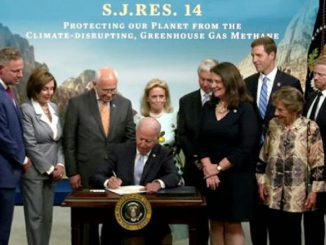
PARIS, France, May 4, 2020 (ENS) – The global COVID-19 pandemic has severely disrupted the global economy, forcing large parts of the world into confinement and “creating the largest shock to the global energy system in more than seven decades,” the International Energy Agency (IEA) said in an unprecedented urgent report.
On April 30, the IEA published the most detailed and up-to-date look yet at the pandemic’s impact on all major fuels and carbon emissions, based on more than 100 days of real-time data.
IEA’s new report, “Global Energy Review 2020: The impacts of the Covid-19 crisis on global energy demand and CO2 emissions,” finds that the drop in energy demand this year is set to plunge seven times lower than the decline after the 2008 financial crisis. The drop in demand is leading to a record fall in carbon emissions of almost eight percent, taking them to their lowest level in a decade.

With travel, trade, and mobility restricted by lockdown measures, demand for fossil fuels is falling across the board for coal, oil, and natural gas.
At the same time, we’re seeing a major shift towards low-carbon sources of electricity including wind, solar PV, hydropower, and nuclear. In fact, low-carbon technologies are now set to extend their lead as the largest source of global electricity generation, reaching a predicted 40 percent of the power mix in 2020.
“This is a historic shock to the entire energy world. Amid today’s unparalleled health and economic crises, the plunge in demand for nearly all major fuels is staggering, especially for coal, oil, and gas. Only renewables are holding up during the previously unheard-of slump in electricity use,” said IEA Executive Director Dr. Fatih Birol.
“It is still too early to determine the longer-term impacts, but the energy industry that emerges from this crisis will be significantly different from the one that came before,” he forecast.
Batteries and hydrogen-producing electrolyzers stand out as two important technologies for the future of mobility due to their ability to convert electricity into chemical energy.
Electrolyzers are devices that use an electric current to provide the energy that splits a water molecule (H2O) into hydrogen (H2) and oxygen (O2). The hydrogen is then used to power hydrogen fuel cell electric vehicles.
Ideally, the IEA report says, clean energy stimulus packages would include both battery and electrolyzer manufacturing in order to take advantage of the spill-over benefits between the two technologies.
Both industries have the potential to create many jobs across their supply chains as the use of batteries and hydrogen picks up.
Lockdowns in Q1 2020 and a slide in consumer confidence has reduced not only transport activity but also global car sales, with important implications for oil demand across the rest of the year, the IEA reports.
Car sales in China declined 82 percent in February relative to 2019, before recovering to 48 percent below 2019 levels in March.

Across the European Union, March car sales fell 55 percent from 2019 levels. Electric vehicle sales maintained their momentum in the European Union, however, reaching record shares in sales in many countries, with 2020 CO2 standards playing an important role in boosting sales.
The picture for EVs in Europe contrasts with China where EV sales in Q1 2020 declined even further than total car sales.
Car sales in the United States also experienced major declines, down 38 percent in March, while sales in India in the same month fell 50 percent. The IEA projects that lower car sales will impact gasoline demand through the remainder of 2020.
The projections of the “Global Energy Review 2020” for energy demand and energy-related emissions for 2020 are based on assumptions that the lockdowns implemented around the world to stem the spread of COVID-19 are progressively eased in most countries in the coming months, accompanied by a gradual economic recovery.
The large drop in emissions during the pandemic is unprecedented, but the IEA warns that if the aftermath of the 2008 financial crisis is anything to go by, carbon emissions could rebound sharply as economic conditions improve. So the agency is urging policymakers to step up their clean energy ambitions and steer energy-related investments onto a more secure and sustainable path.
The IEA is providing data, analysis, and recommendations to help governments and industry make smart decisions as they deal with the immediate crisis while aiming to move towards more affordable, secure, and sustainable energy systems in the longer term.
Copyright Environment News Service (ENS) 2020. All rights reserved.
© 2020, Environment News Service. All rights reserved. Content may be quoted only with proper attribution and a direct link to the original article. Full reproduction is prohibited.



